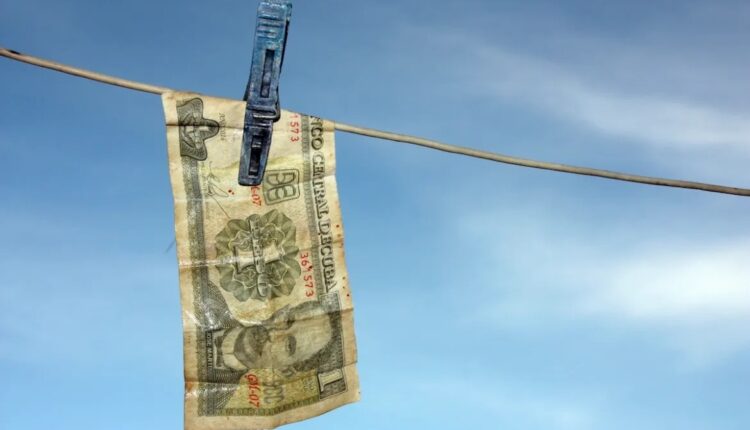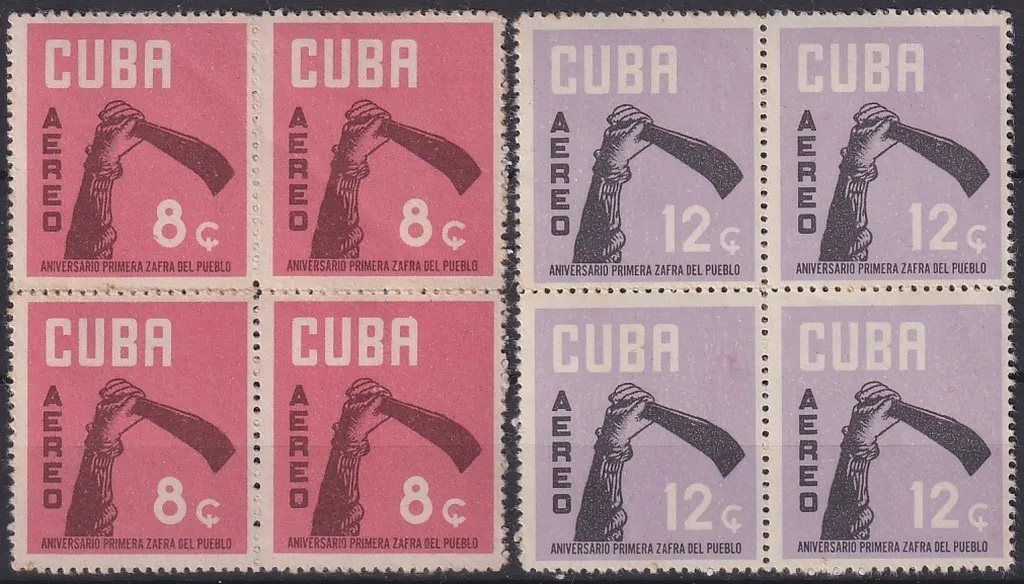
Contempt for the value of a Cuban’s labor
From La Joven Cuba
In my youth we lived surrounded by slogans that communicated power and guided us on the path of the Revolution — without ceasing to be subjected to the devastating criticism of creole jokes. One of them read: “The present is one of struggle, the future is ours.” Over time we understood that slogans like that are similar to the horizon, that the closer you come to it the further it gets. The present of today’s workers is yesterday’s future, and each day is more of a struggle and less ours.
When young people ask me about the credulity of my generation, I explain that currencies like that worked a lot at the level of social psychology. Those were times when the contribution of living labor was highly valued as part of the revolutionary epic. The harvest “of the people,” agricultural and military mobilizations, red Saturdays / Sundays, jobs, voluntary overtime … were massive tasks that involved different generations and social sectors, moved not only by ideopolitical coercion, but also by enthusiasm and the pleasure of a job well done.
But this idealistic approach, coupled with the existence of a social contract typical of the so-called real socialism — egalitarianism, low wages and prices, large social consumption funds, exchange with the socialist camp based on volumes of products, and not of the world market prices — affected the perception of work as a creator of value.
Thirty years after the breakdown of that model, some decision-makers on the Island still consider that the work of their compatriots is worth less than a similar contribution from a foreigner. That hurts the pockets and consciences of Cubans and pushes young people into the diaspora. *****
*****
The Government / Party / State has just announced another plan of measures, this time in the form of a “special indication” from the former first secretary of the PCC. It aims to rescue the sugar agribusiness and is based on everything that this blessed branch can contribute to the country in terms of derivatives —including sugar, as Che once said —, employment and productive chains.
Not a word was spoken about the debacle that the decision to dismantle it and sell the beloved old iron to Japan for scrap metal. Nor about the disastrous Álvaro Reinoso proposal (a process of reorganization of the Cuban sugar agribusiness, started in October 2002) — may the wise man pardon me— and the unfulfilled promises to convert those millions of hectares of sugar cane fields into food-producing farms.
The reason given at the time for such a decision was that maintaining the obsolete agro-industry was very costly for the country, since it was subsidized by the state budget. Suddenly we learned that the product that we sold to the world since the end of the 18th century, which allowed us to import everything, attract national and foreign capital, modernized and beautified cities and towns, and helped develop one of the richest and most influential cultures in the world was now unaffordable for the state itself, which lived off it as the main source of income.
Many questions regarding that fatal determination — which broke the backbone of the economy and hurt the Cuban identity— have remained unanswered in the past twenty years: Why in the boom times was the agribusiness not modernized with the funds it produced and accumulated so much technological obsolescence? Given the cyclical decline in prices in the world market, what were other affected countries doing and / or how did Cuba respond to similar situations in other times? What was then done with the funds obtained from the valuable ferrous scrap sold, since neither the industry was modernized nor was the population’s consumption expanded?
At the base of that convoluted reasoning was an inexplicable system in which sugar was accounted for in pesos, supposedly equivalent to US dollars, while the country bought from the world with real USD. However, who was responsible for keeping the peso used by state entities so revalued, even after they reached 150 pesos in the informal market in the mid-90s, and in 2000 they were officially changed from 1 to 25? Cuban producers or decision-makers at the central level?
 The artificiality of the situation worsened even more when in 2003 it was decided to substitute the USD for the convertible currency (CUC) in transactions between state-owned companies, while a high centralization of the mechanisms of allocation and use of foreign exchange was carried out. Then all the productive chains were distorted, since it was left to the government’s discretion which expenditures and exchanges would be made in Cuban pesos (CUP) and which in CUC.
The artificiality of the situation worsened even more when in 2003 it was decided to substitute the USD for the convertible currency (CUC) in transactions between state-owned companies, while a high centralization of the mechanisms of allocation and use of foreign exchange was carried out. Then all the productive chains were distorted, since it was left to the government’s discretion which expenditures and exchanges would be made in Cuban pesos (CUP) and which in CUC.
While the main expenditure of companies —salaries— remained in CUP, those of the goods and services demanded by consumers were increasingly expressed in CUC. Thus, the minimum wage, which was one hundred pesos in Cuba until 2005, actually represented little more than 4 USD; meanwhile, the average salary of a worker in the period, 282 pesos, barely reached 12 USD.
According to Marx, the ideal magnitude of the wage so that there is an exchange of equivalents between the employer — in the Cuban case, the State — and the worker, is the full value of their labor power, whose magnitude (wage) is the sum of money that allows you to meet your needs and those of your family. This economic law, which does not affect in the least the capital gain / profit of the employer, is valid in any society where monetary-mercantile relations prevail, be they capitalist or socialist. However, in Cuba it continues to stubbornly deny itself and, with it, the value of the Cuban’s work.
*****
One of the declared objectives of the “Task of Reordering” (TO) was to satisfy the old popular desire, and of many specialists, to return to the reign of the peso as the only national currency. But this revaluation of wages and domestic consumption of workers is postponed every day in this country. Its current nemesis is the growing market in USD, the only solution proven by the Government / Party / State in the face of the pandemic crisis and the Trump / Biden sanctions. The truth is that not even the outbreak of July 11 could put limits on the star business of the GAESA consortium: the triad of emigrant trips / remittances / internal foreign exchange market.
Every day new stores in plastic USD sprout up all over the country and other more exclusive stores are emerging: those reserved for online purchases from abroad, or those that only accept payments with VISA or MASTERCARD cards. Worse still is the policy of selling goods and offering credits to state, private and cooperative producers, in USD. This forces them to offer most of their goods and services in the domestic market in USD and further reduces the performance of the MN. Additionally, the prices of the stores in USD also grow and far exceed those that had similar products in the old markets in CUC.
In 2021, the disappearance of the CUC as a means of circulation has hurt the consumer instead of benefiting them. The work of Cubans is undervalued at a higher rate than before, as they cannot legally exchange their income in pesos for foreign currency, nor place funds in USD directly on such cards, which do not admit income within Cuba in their own currency.
Since the official exchange of the peso for international currencies does not work — if before a worker needed 25 pesos to have 1 CUC / USD, today he needs 78 to put the same USD on a magnetic card, and 68 to buy it physically. On the assumption that someone who receives the average salary promised in the reordering (TO): 4,237 pesos, could convert them completely into plastic USD, he would only be able to enter 54 USD. Not to mention those who earn the minimum wage: 1,528 pesos, which would barely make 19 USD.
Unfortunately, the previous example is hypothetical, since the galloping inflation of the market in national currency throughout 2021 makes it unfeasible in practice. In fact, the average salary calculated by the designers of the TO to triple a basic basket (CB), is not even enough to buy it today. Taking into account that in January this was estimated at 1,528 pesos and applying a modest inflation rate of 300% — since we do not know the current consumer price index (CPI) — today the CB would be around 4,584 pesos per person. And this only to buy in the meager market in national currency.
The sale via cards in USD of essential use and consumption goods has completely dislodged one of the anticipated benefits of OT: the recovery of the value of work, of greater intensity, productivity and complexity. Once again, it is the GAESA companies and the groups of intermediaries of the underground economy that benefit from the Cuban crisis, while the worker and his family do not surpass their poverty.
The paradox is even manifested in the fact that while the state stores that have important offers only accept charges in plastic USD and international credit cards, private sellers accept payment for goods and services in USD or in national currency, at slightly differentiated prices in favor of the peso holder.
As I pointed out in the book “The King’s Mantle” (Ediciones Matanzas, 2020, p. 85):
It is time to abandon the failed attempt to force free and educated workers to contribute their entire labor to the State in exchange for a real salary that is not enough for them to survive, against the laws of political economy and the most elemental human rights. Charging a minimum wage equivalent to the basic food basket and growing in line with the increase in the CPI is not a dream that can wait for us to come out of underdevelopment, or for the State company to cover certain efficiency parameters (…); It is an inalienable right of workers, even more so in a socialist country.
The revival of tourism and the sale of biopharmaceutical products abroad are not enough to relaunch our economy if the use of the peso continues to be limited to the payment of wages and the regulated and free markets, the latter subject to inflation of more than four digits. Only the true monetary reunification will be able to enhance the work of Cubans and restore its real value. I am referring to a currency that will serve to pay off any debt contracted by its holder in the national territory.

